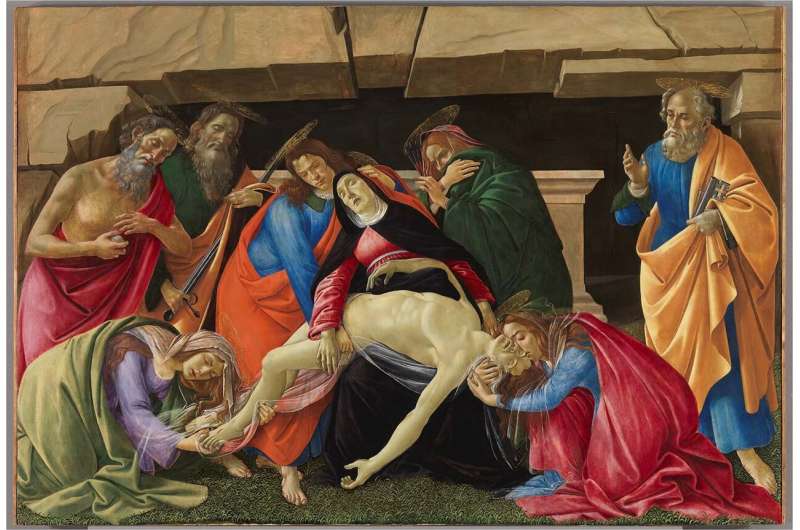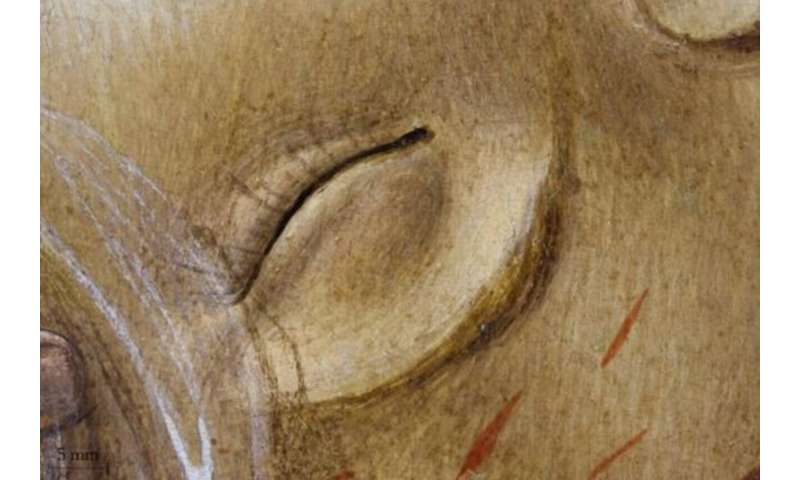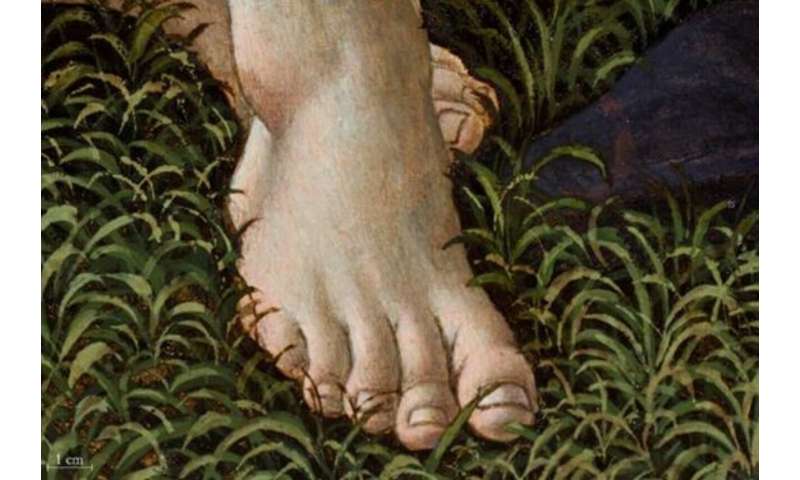March 29, 2023 report
This article has been reviewed according to Science X's editorial process and policies. Editors have highlighted the following attributes while ensuring the content's credibility:
fact-checked
peer-reviewed publication
trusted source
proofread
Examining why egg yolk was used in Old Masters' oil paints

A team of chemical engineers affiliated with several institutions in Europe has determined why Old Masters of the 16th, 17th, and early 18th centuries added egg yolk to their oil-based paints. In their study, reported in the journal Nature Communications, the group added fresh egg yolk to the types of oils used by Renaissance painters and tested them to see changes it made to their properties.
For many years, historians have known that the Old Masters of the Renaissance, such as Sandro Botticelli or Leonardo da Vinci, added proteins such as egg yolk to their oil-based paints—creating a medium known as egg tempera—but no one knew why. In this new effort, the chemists set themselves the task of solving the mystery.
The work involved creating two types of oil-based paints, both with yolk added. One mixture consisted of nothing but yolk and oil. The other had yolk, oil and pigments to add coloring. The team also created similar paints without using egg yolk. The group then used the paints to create paintings that could be used for testing purposes. Such tests included taking measurements of moisture amounts and movement, oxidation, time to dry and heat capacity.
The researchers found that adding yolk helped to create stronger bonding between pigment particles, which made for stiffer paint. And that, they noted, would have been ideal for use in impasto painting, where the ink is applied thickly to give it a three-dimensional quality. The group also found that adding yolk reduced wrinkling of the paint, helping it to retain the shape applied by the painter—and helped to protect the paint against exposure to high humidity. Antioxidants in the yolk also helped to prevent yellowing.
Adding egg yolk also allowed the painter, the team found, to add more pigment to the oil, which in turn, helped to create more vivid images.
-

The flesh, details of Christ’s head show the typical egg tempera layer build-up and paint application by hatching. In contrast, the grass foreground (including the dark green (almost black) paint layer) shows typical properties of oil paints. Credit: Wibke Neugebauer, Munich. -

The flesh, details of St. John’s feet (right) show the typical egg tempera layer build-up and paint application by hatching. In contrast, the grass foreground (including the dark green (almost black) paint layer) shows typical properties of oil paints. Credit: Wibke Neugebauer, Munich.
The research group found that there was one a downside to adding yolk—the paint takes longer to dry, which means the painter has to wait longer to add another coat.
More information: Ophélie Ranquet et al, A holistic view on the role of egg yolk in Old Masters' oil paints, Nature Communications (2023). DOI: 10.1038/s41467-023-36859-5
Journal information: Nature Communications
© 2023 Science X Network





















